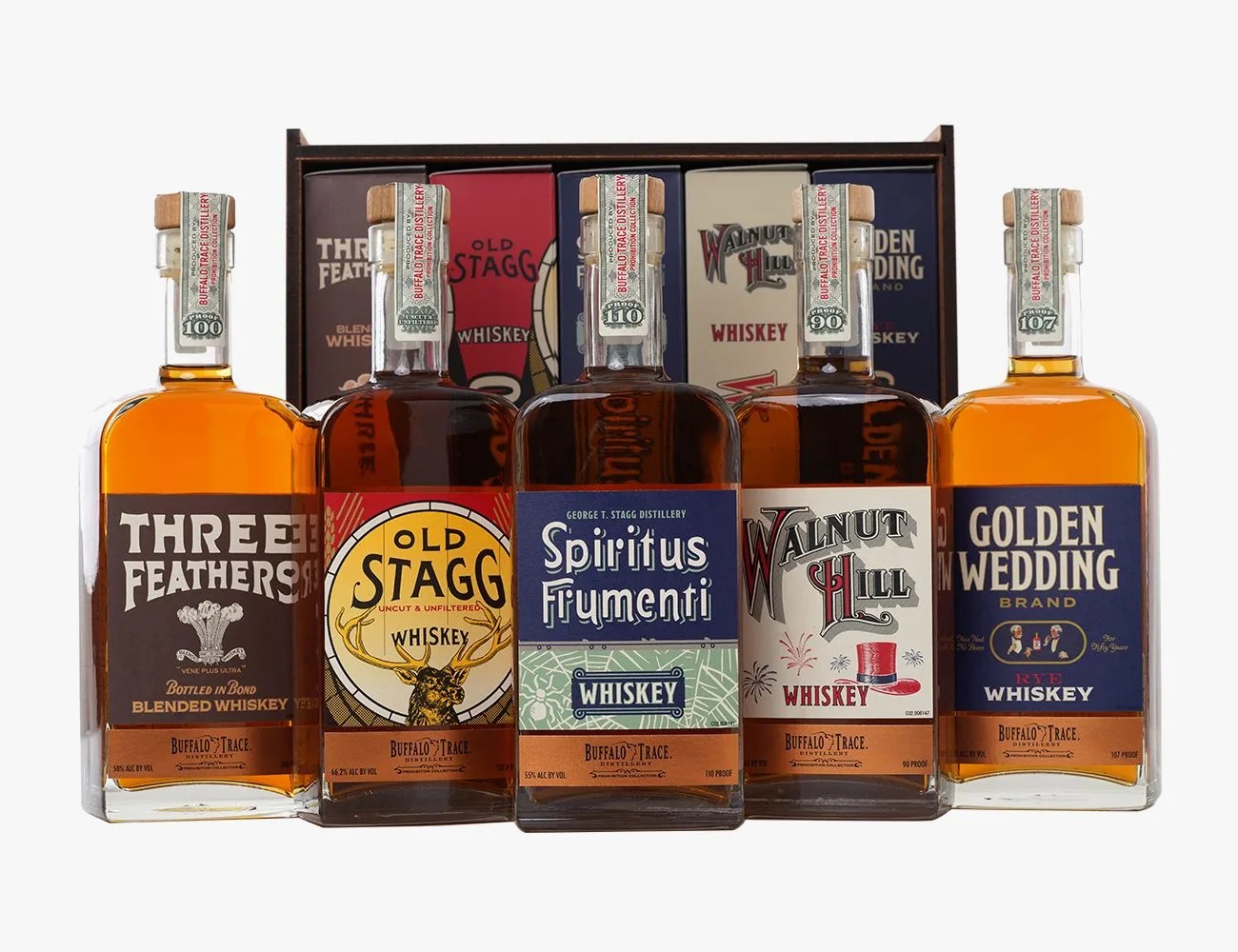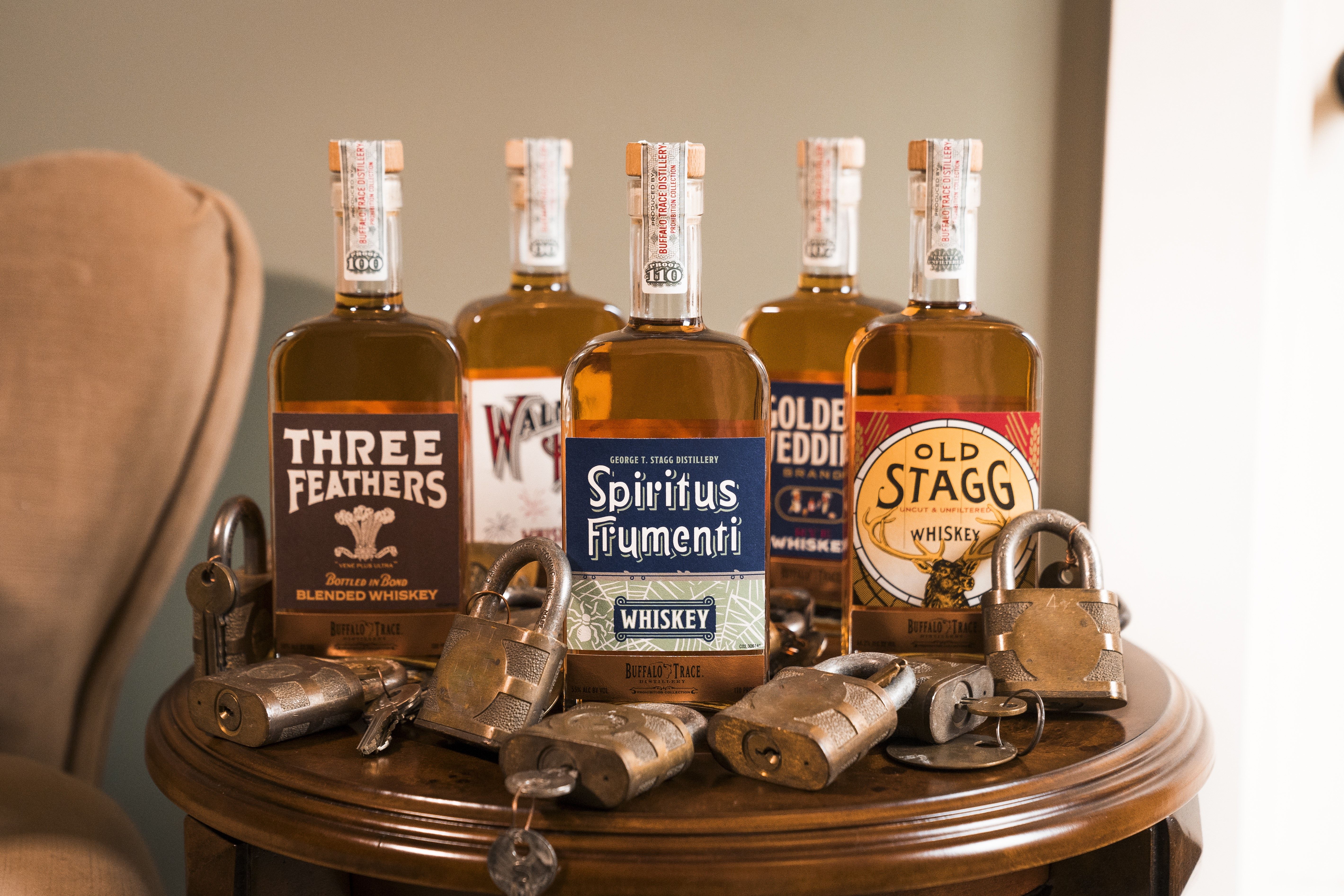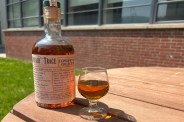Buffalo Trace recently announced a head-turning new endeavor: the Prohibition Collection. The Buffalo Trace Prohibition Collection recreates long-lost whiskeys that were produced a century ago during Prohibition when Buffalo Trace Distillery (then George T. Stagg Distillery) was one of just six in the United States to hold a license allowing them to produce “medicinal whiskey” — the only legal form of alcohol during those dark days.
The first limited collection in what will be an annual release going forward featuring new bottles each year resurrects five whiskeys produced at the distillery during Prohibition that had since been lost to time: Old Stagg, the former flagship of the distillery; Golden Wedding, which traces its roots back to Pennsylvania’s Schenley Distilling in the 1800s; Three Feathers, which is the oldest brand in the collection, dating back to at least 1812; Walnut Hill, which had its original production overseen by then-distillery president Albert Blanton; and finally Spiritus Frumenti, which was not a brand but was the generic name for medicinal whiskey at the time.
Not content to just read about these old-school whiskeys, I got my hands on some samples to try them for myself.
All whiskeys were sampled neat from a whiskey tasting glass. To learn more about our testing methodology and how we evaluate products, head here.
Buffalo Trace Prohibition Collection: What We Think
I’m not telling any tales out of school when I say that Buffalo Trace has another hit on its hands. Every whiskey in the collection is carefully crafted, delicious and well worth the effort of seeking out. Sure it’s pricey at $1,000 for the full set — and will likely see massive upcharges on the secondhand market — but if you’re a whiskey enthusiast and can swing the price tag, you’re going to want to get it.
 Buffalo Trace Distillery
Buffalo Trace DistilleryBuffalo Trace Prohibition Collection
Pros
- Supremely well-crafted whiskeys
- A fun exploration of Buffalo Trace (and American) history
- A great variety of styles
Cons
- Very expensive and near-impossible to get








